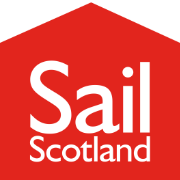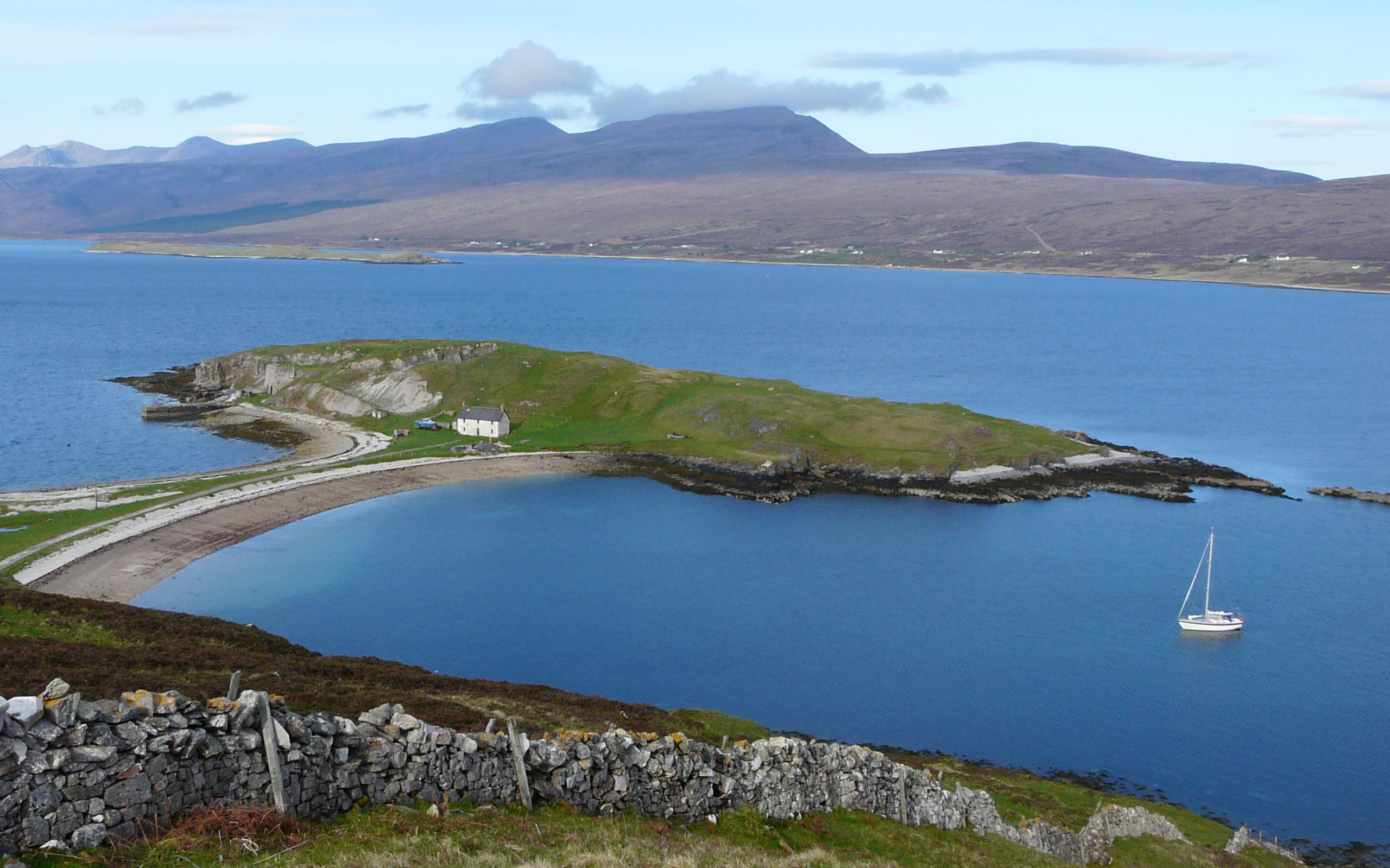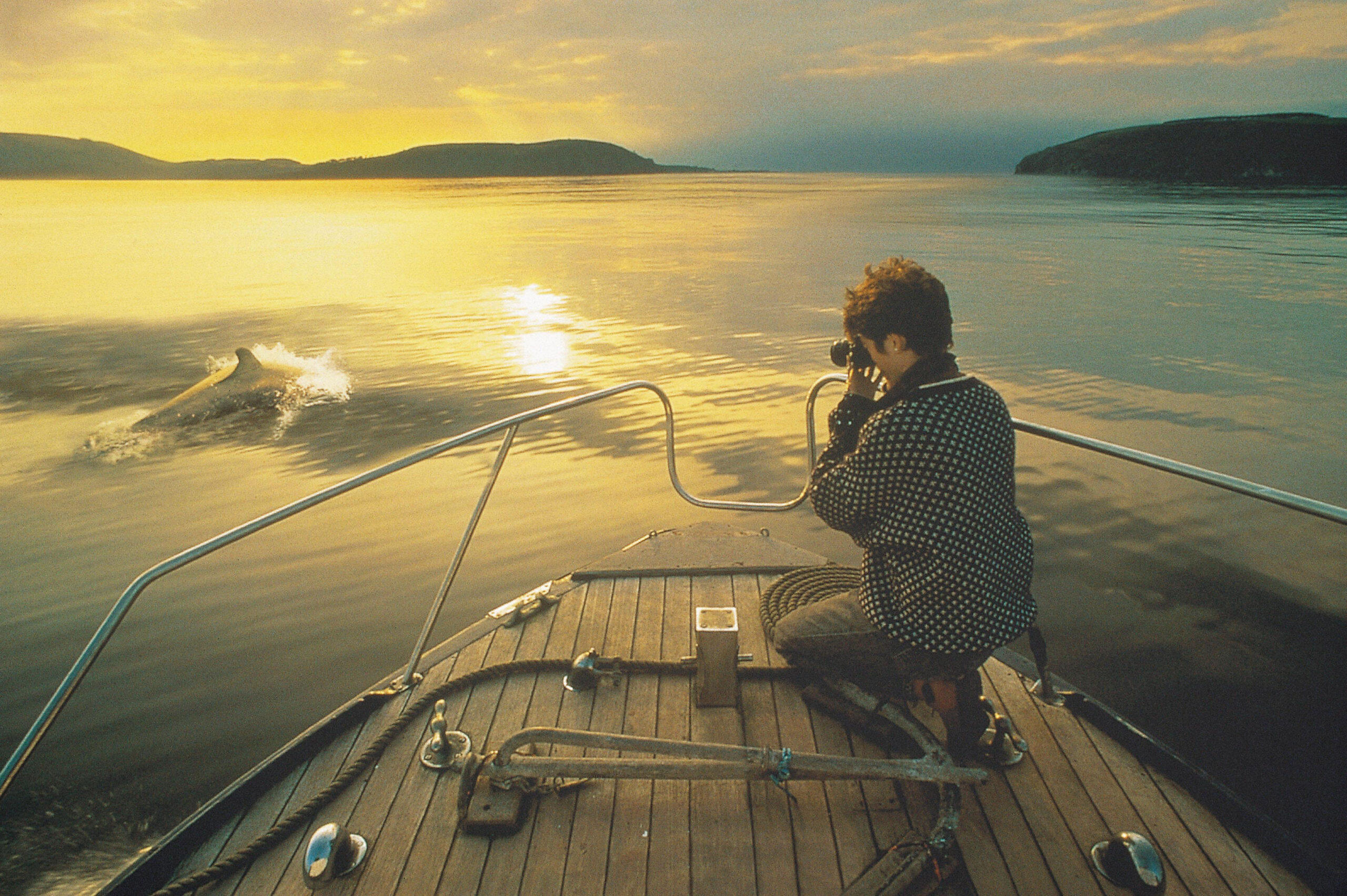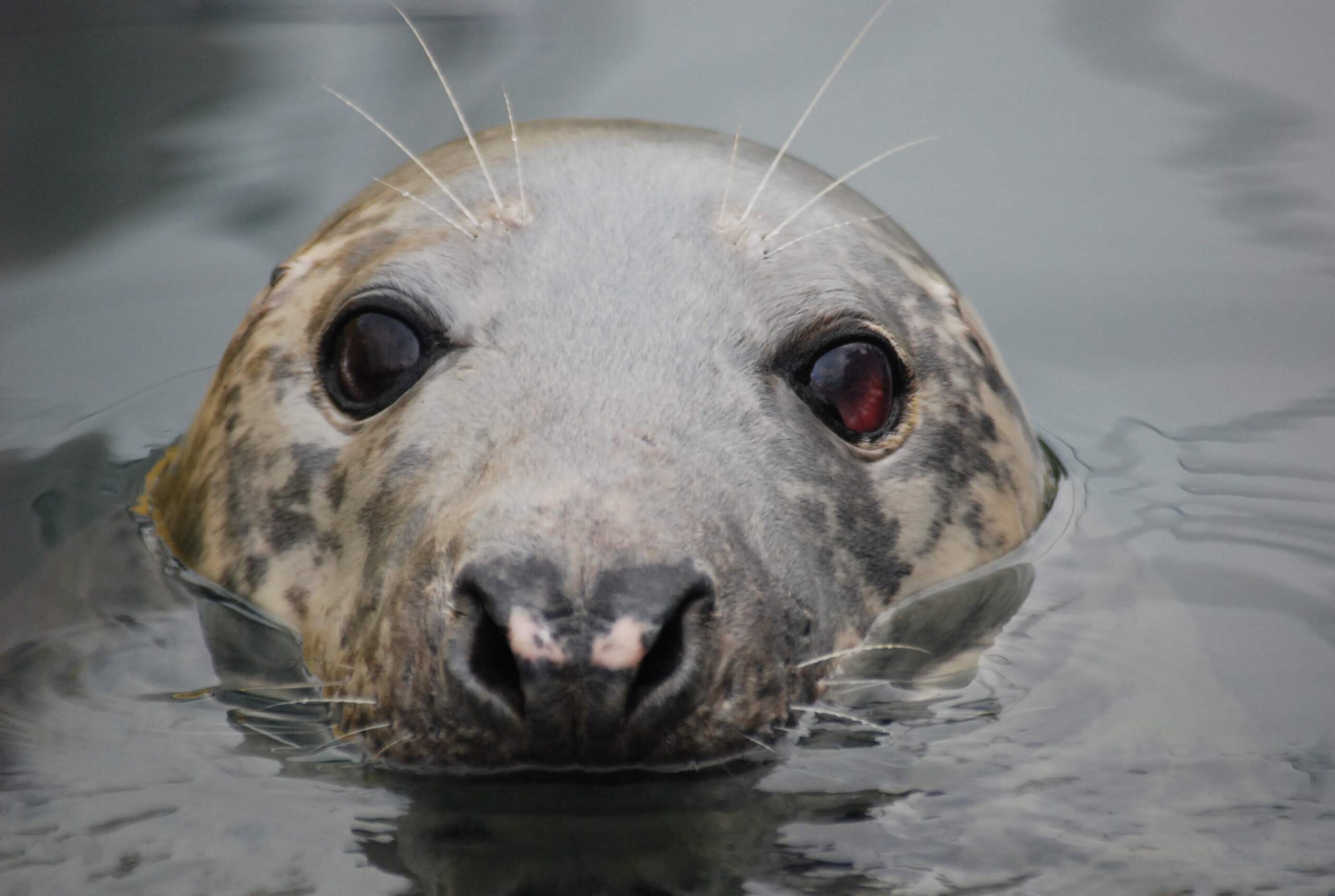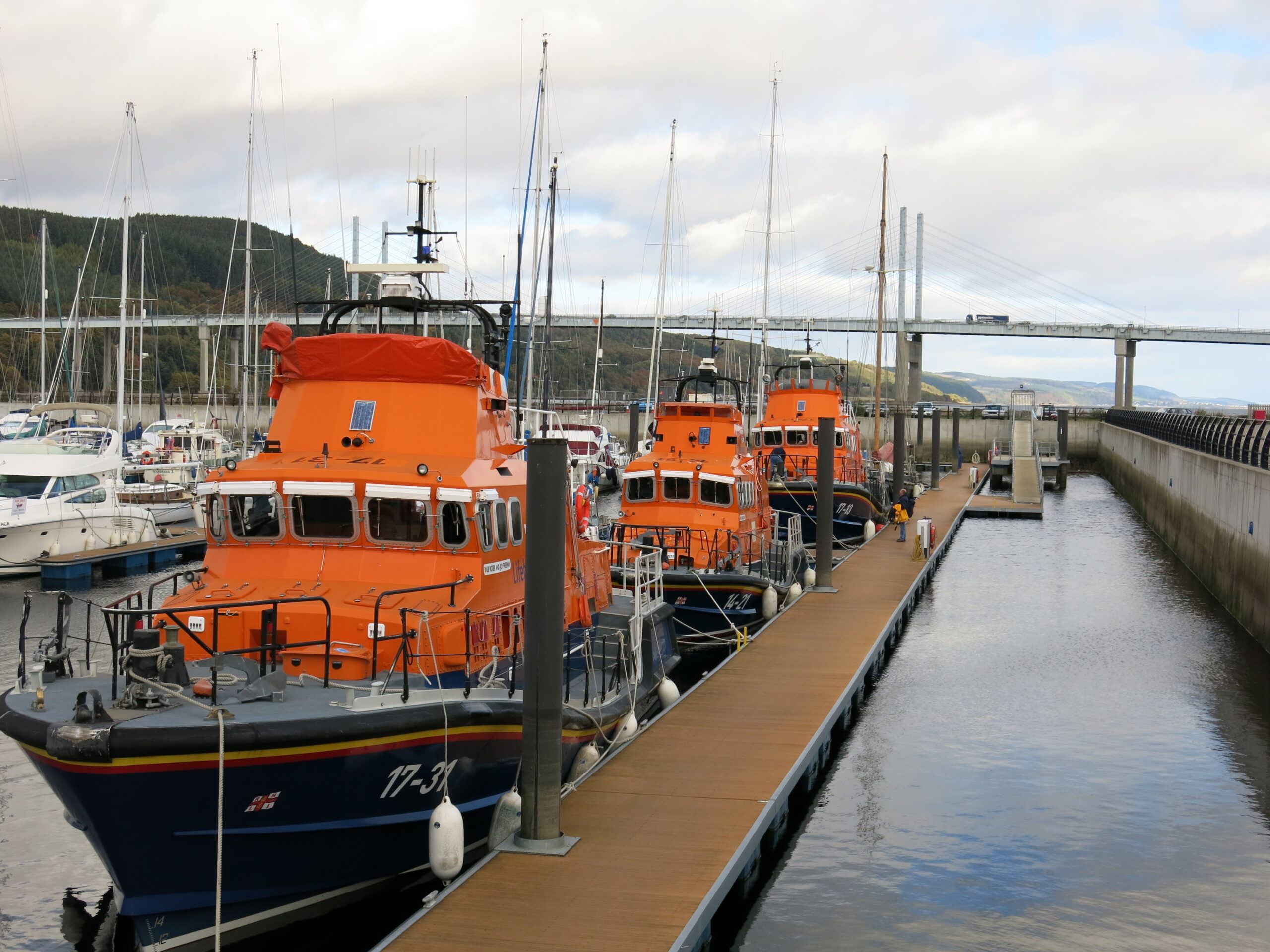East Coast
East Coast
ALL THE WAY UP THE EAST COAST, PORTS THAT MADE THEIR NAME IN THE HERRING ERA have reinvented themselves by investing in marina facilities. Visiting sailors can enjoy a busy programme of summer regattas and festivals as well as stopping off in Scotland’s capital city.
The glory days of the old fishing fleets may be long gone, but the historic harbours and sheltered bays of the east coast are still packed with character and are attracting increasing numbers of yachtsmen. Some of these places were among the busiest ports in Europe in the days of the herring drifters, and an almost tangible sense of local pride lingers on in the sea air.
Until relatively recently this coast was viewed as something of a ‘missing link’ in a potential circumnavigation of Britain, but the growth of marina facilities has changed all that and eastern Scotland is now as well served as any part of the country.
This welcome trend has been seen all the way from the border at Berwick to Wick in the far north. Often these facilities are within former fishing harbours and, while some may be smaller than others, they all offer a warm welcome. Furthermore, many ‘unconverted’ fishing harbours are also pleased to welcome visiting yachts, meaning the choice of destination is no longer automatic and a variety of passages may be planned.
The popularity of Scotland as a cruising ground for continental boat owners, particularly those wishing to follow the path of Bjorn Larsson and sail ‘The Celtic Ring’, has meant that many visiting boats will now call in to some of the east coast destinations en route to either the Caledonian Canal or the Pentland Firth. As some of the facilities are smaller than others, it is advisable to check berth availability in advance.
A Guide to Sailing…
A Guide to Sailing…
Find adventure from the depths of Scotland’s sparkling aquamarine waters to the soaring summits of its breathtaking peaks with our Guide to Sailing Scotland.
Exploring its natural wonders or its manmade icons; delving into its storied history or diving with its giants; draining a dram or drinking in the sunset – whatever you’re looking for, there’s a marina or anchorage that’s the ideal base to find it all.
Check out our Guide to Sailing The East Coast videos below or head to YouTube to see even more videos from all over Scotland and get all the info and inspiration you need to book a charter, plan a cruise to new destinations, relocate your vessel to Scotland or simply plan to spend more time on the water.
Planning a sail Scotland adventure? Don’t forget to check out our exclusive offers on luxury yacht charter, berthing, and much more on our offers hub!
Port Edgar Marina
Port Edgar Marina
An ideal marina for exploring all Scotland’s east coast has to offer, Port Edgar offers a huge range of amenities and facilities onsite – all just 30 minutes from Edinburgh!
Inverness Marina
Inverness Marina
Inverness Marina, lies seven miles south west of Chanonry Point in the Inverness Firth and just one mile from the city centre of Inverness. The marina sits close to the eastern entrance of the Caledonian Canal, making it an ideal location for yachts to be based with easy access to both the Scottish north east coast and via the canal to the popular Scottish west coast.
Arbroath Harbour
Arbroath Harbour
Set sail for sheltered Arbroath Harbour and enjoy direct access to the town centre and its famous seafood. Don’t forget to pick up an Arbroath Smokie!
Wick Marina
Wick Marina
Wick lies in a strategic position on the northeast tip of the mainland and is ideally situated for passage to or from the Northern Isles and the west coast. The 80 berth marina is only a five-minute stroll from the town centre with plenty of shopping and leisure opportunities and renowned Caithness hospitality. Local visitor attractions such as the award-winning Wick Heritage Centre (not to mention Pulteney Distillery!) are all close by.
Caledonian Canal
Caledonian Canal
Considered by many as one of the greatest waterways of the world, sailing the majestic Caledonian Canal is an unforgettable experience. Scotland’s longest inland waterway, the 60-mile Caledonian links Scotland’s east and west coasts and was built to provide a shortcut between the North Sea and the Atlantic Ocean
More Info
More Info
Starting in the south, the first east coast pontoon facility can be found at Eyemouth. Once a busy fishing harbour, it now offers secure berthing for visiting yachts on 230m of pontoons. Port Edgar is still the main marina facility on this stretch of coast. From there, it is possible to cruise the Firth of Forth to destinations such as the new marina at Anstruther on the Fife coast, or further east around Bass Rock.
Port Edgar hosts a busy sailing school run by Port Edgar Watersports CIC which offers the RYA’s full range of sailing courses. It also has a new skippered yacht charter business, Edinburgh Boat Charters, which offers a range of packages for customers. The marina is well suited to visitors from the continent who may wish to leave their boat for a few weeks while they fly back home from the nearby airport.
There are further pontoon facilities available along the Forth at Granton that are ideally suited for an excursion into Edinburgh city centre. The use of the harbour is shared by both the Royal Forth Yacht Club and Forth Corinthian Yacht Club, which have access to both an all-tides pontoon and swinging moorings.
Further north, beyond Anstruther and the Fife peninsula, pontoon facilities are available at Tayport, near the mouth of the River Tay, and a short distance across the estuary there is a marina facility at Arbroath. North of this is the longest stretch of ‘pontoon-free’ coastline, the next facility being at Peterhead Bay Marina some 60 miles away. However, there are still places to stop as Aberdeenshire Council now encourages yachts to visit many of its harbours. Some of these are ideally located for exploring Royal Deeside, while others offer a range of shops and restaurants.
Turning west into the Moray Firth, the choice of destinations increases significantly. Both Banff and Lossiemouth boast new marina facilities, complementing those at Whitehills and the pontoons in the picturesque harbour of Findochty (pronounced ‘Finechty’). This stretch of coastline is a popular dolphin-watching area and some crews will be accompanied by dolphins riding the bow wave for at least a short distance. Vessels destined for the Caledonian Canal will head up the firth into Inverness, passing under the Kessock Bridge to reach the Highland Capital. Travellers taking this route should note that the bridge has a clearance of 29m, sufficient for most but not necessarily all yachts, and that the canal is usually closed for two hours either side of low water during normal operating hours. Inverness Marina is a relatively new, fully serviced 150-berth marina located outside the canal entrance on the south side of the firth with access available in all tides. This, together with a 75-berth marina at Seaport just inside the canal, makes an ideal base for exploring Inverness or a point for arranging crew changeovers, taking advantage of excellent road, rail and air links.
Boats that are heading on to Orkney or beyond need not venture up the firth but may instead head directly from Lossiemouth to Helmsdale, where there are pontoon facilities. Alternatively, the passage may be extended as far as Wick where there is a sizeable marina and plenty of shelter to be had inside the old harbour. This is the final stopping point before rounding Duncansby Head, where the choice is then whether to head west along Scotland’s northern coastline, northwards to Orkney and Shetland or north-east to Scandinavia. The four main marina operators between Inverness and Shetland have grouped together to create the Viking Trail to encourage greater use of the new facilities and open up cruising routes to the Northern Isles.
While the east coast may be seen as a cruising route to some sailors, for others it represents their home waters and as a result hosts many activities during the summer months. For example, the Scottish Traditional Boat Festival (www.stbfportsoy.org) takes place at Portsoy in late June. The festival puts a special emphasis on boat-building, restoration and sailing. Also highlighted are traditional crafts including knitting, weaving and embroidery.
In August/September there is East Coast Sailing Week (www.ecsw.org.uk), an annual event covering Scotland’s east coast and the north-east of England. Held in rotation in the Tay estuary, the Forth estuary and waters off the north-east English coast, the event started in 1987 and has become the area’s premier regatta. It attracts boats from the Moray Firth, Tayport and England as well as some from the Firth of Clyde. There are also a number of club and visitor regattas during the season on the east coast, the main focal point being Port Edgar on the Firth of Forth. Further details of these events can be found at www.fyca.org.uk
